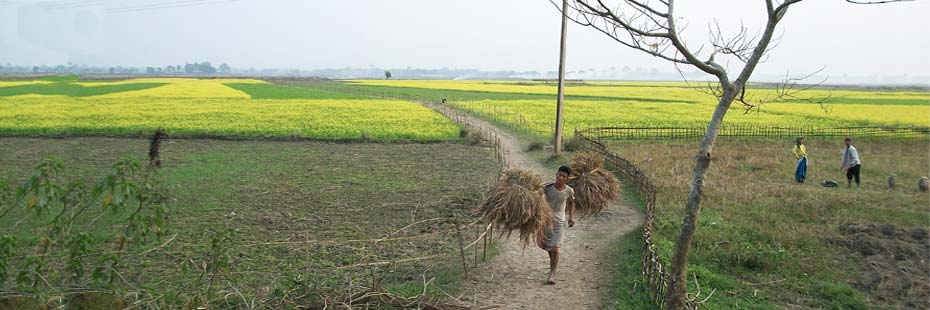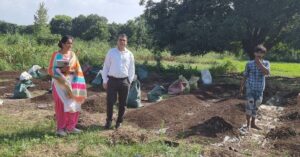Meet Komal Saul, The ‘Instant’ Rice from Assam That Needs No Cooking
An indigenous variety from Assam that cooks on its own, Komal Saul is quickly emerging as a quirky and sustainable alternative to regular rice.

A rice that cooks on its own? Yes, it exists. Komal Saul, an indigenous variety from Assam, is quickly emerging as a quirky and sustainable alternative to conventional rice at a time when energy conservation is becoming a priority everywhere.
This food grain (whose name translates to ‘rice that is soft’) has gained a reputation as a “magic” rice as it need not be cooked the conventional way.
All one needs to do is soak the grains in some warm water for about 10-15 minutes (or in cold water for about 30 mins) and it’s done!

Komal Saul is made by manually processing Bora Saul, a variety of sticky rice grown widely in Majuli — the world’s largest deltaic island located amidst the ever-shifting sandbanks of the river Brahmaputra in Assam. The transformation into ‘instant’ rice happens after the harvested rice is soaked overnight, boiled and then sun-dried, all within twenty-four hours.
One of the most underrated products of Assam, it has been traditionally consumed only by local communities. They prepare it by soaking it in hot water overnight and eat it the next day with either mustard oil and onions or potato mash and pickles
This subtly flavoured rice is also blended with curd/cream, jaggery and banana powder to create a breakfast favourite and popular sweet treat known as Jolpaan that is served on festive and auspicious days.
Mixing this with other indigenous cereals such as xandoh (ground rice), chire (flattened rice), muri (puffed rice) and Bora Saul results in another much-loved combination.

As for this short-grain variant’s unique softness, it is a result of its low content of amylose, a starch component that contributes to the hardness of food grains. Compared to the usual 20-25% in most of the regular rice varieties, it contains just 4-5% amylose.
This also makes Komal Saul easily digestible, which is why this fragrant and fluffy rice is light on the stomach. It also makes a versatile ingredient, as it doesn’t have a distinctive flavour of its own and it takes on the flavour of other, stronger-flavoured additions to the dish.
Interestingly, scientists at the Cuttack-based Central Rice Research Institute (CRRI) have successfully grown Agonibora — a cousin of Komal Saul —in Orissa in an experiment to see if the rice can be cultivated outside Assam.
Research has revealed that, since there is no spectacularly unique feature about Komal Saul’s growing conditions, it can most probably be grown in parts of Andhra Pradesh, Bihar and West Bengal where the agro-climatic zones are similar to those in Assam.

Furthermore, Guwahati-based Green Cover Overseas (an export and trading firm that deals in local spices, herbs and minor forest produce) is already working towards creating instant rice cups (similar to cup noodles) where all one needs to do is add hot water. Made using Komal Saul, this quick-fix product will have flavours such as pulao and vegetable rice.
A unique representative of India’s indigenous rice diversity, Komal Saul can help in significantly reducing energy consumption among rice-eaters. This is important because there’s no denying the fact that India loves its rice and that it is the staple food of a large chunk of its population.
Also, among the extremely marginalised rural poor (who use plant biomass to cook food) Komal Saul can not only reduce expenses and drudgery, it can also cut down on their exposure to harmful smoke.
However, it must not be forgotten that since this ‘instant’ rice needs water to cook on its own, availability of safe drinking water in these households is a must to avoid contamination. Only then can this idea reap its true potential!
Also Read: These 13 Ancient Grains of the World May Hold the Key to Food Security
Like this story? Or have something to share? Write to us: [email protected], or connect with us on Facebook and Twitter.
NEW: Click here to get positive news on WhatsApp!
If you found our stories insightful, informative, or even just enjoyable, we invite you to consider making a voluntary payment to support the work we do at The Better India. Your contribution helps us continue producing quality content that educates, inspires, and drives positive change.
Choose one of the payment options below for your contribution-
By paying for the stories you value, you directly contribute to sustaining our efforts focused on making a difference in the world. Together, let's ensure that impactful stories continue to be told and shared, enriching lives and communities alike.
Thank you for your support. Here are some frequently asked questions you might find helpful to know why you are contributing?


This story made me
-
97
-
121
-
89
-
167














